MENU
Skip menuResearch interests
Observations of cosmic large-scale structure have emerged as some of the richest probes for cosmology over the past few decades. Galaxy redshift-surveys are exploring ever larger fractions of the observable Universe and reveal it to be remarkably isotropic and homogeneous. Only on scales below ∼ 100 Mpc they find more complicated structures, known as the cosmic web consisting of gravitationally bound arrangements of dark matter, such as halos, filaments and sheets, which themselves host galaxies. Their statistical composition and spatial distribution contains a plethora of information about the origin and evolution of the Universe, but due to the nonlinear and stochastic nature of structure formation it is difficult to infer its underlying physical laws and parameters. Thanks to substantial efforts in theoretical and numerical studies, this task has become more and more procurable in modern-day cosmology. For the next generation of planned experiments, unprecedented precision measurements will demand firm predictions from theory. My aim is to tackle open problems in cosmology using either analytical, numerical, or observational methods. I am particularly interested in investigating the nature of dark energy and dark matter, measuring cosmological parameters, and testing Einstein's General Relativity (GR). Among the relevant observational missions in this field are both completed and planned experiments, such as BOSS, DES, EUCLID, LSST, and The Roman Space Telescope. Brief descriptions of some selected research projects I have been involved in are listed below.Cosmic Voids
Large-Scale Structure
The Galactic Center Black Hole
The center of the Milky Way galaxy harbors a nuclear star cluster in whose interior observers have found the motionless radio source Sagittarius A* (Sgr A*) that exhibits flaring activity in the infrared and X-ray domains [1,2]. Dynamical evidence shows that this source is powered by a super-massive object, most likely a black hole [3]. Its mass and distance can be inferred from the motion of the innermost stars, yielding a Schwarzschild radius with apparent size of ~ 10 µas on sky. In contrast, a stellar black hole at 1 kpc distance has order 10^-5 µas. This makes Sgr A* the black hole candidate of choice for resolving the Schwarzschild scale. The observational data at hand strongly favor one interpretation for the flares from the galactic center: emission of synchrotron radiation from matter orbiting the black hole near its innermost stable circular orbit (ISCO) [2]. Such a hot spot could be produced by synchrotron emission from electrons accelerated in the surrounding disk, e.g. through magnetic reconnection events. Time-resolved astrometry of the flares would allow the shape of the orbit to be traced, lensed by the strong gravitational field of the black hole. This would give access to the size and orientation of the orbit, as well as other physical parameters of the model, and more fundamentally provide a probe for the strong gravitational field of a black hole.In the near infrared (NIR), Sgr A* is studied using 10m-class telescopes such as the ESO Very Large Telescope (VLT) and the Keck telescopes with a diffraction limit of a few 10 mas. Both the VLT and Keck feature several telescopes on the same site and offer an interferometric mode in which the collected light can be combined in a coherent fashion, allowing phase-referenced measurements. These interferometers can provide differential astrometry with a very high accuracy, the PRIMA facility on the VLT Interfero- meter (VLTI) will reach 10 µas. I was involved in a further study that has led to propose a second-generation instrument for the VLTI: GRAVITY, a general purpose instrument optimized for galactic center science cases [4].
The aim of my research was to study the observational prospects of a hot spot motion around the galactic center black hole with the GRAVITY instrument at the VLTI [5]. On the basis of general relativistic ray-tracing simulations, we developed a realistic model for the evolution of a gravitationally shearing hot spot orbiting the black hole including heating and cooling phases (see Fig. 1). From that we extracted light curves to match existing VLT observations, and centroid motions to predict future VLTI measurements.
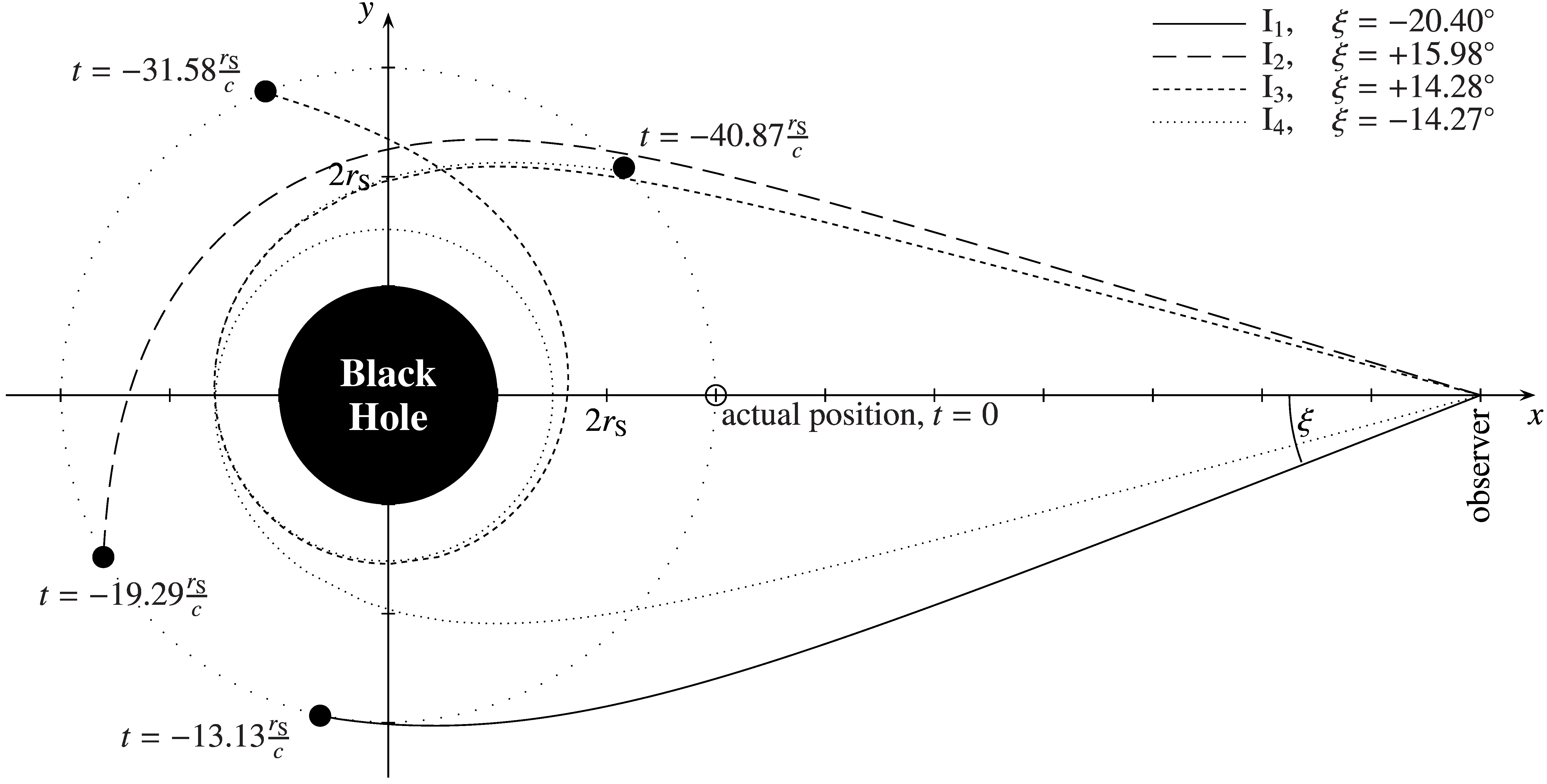
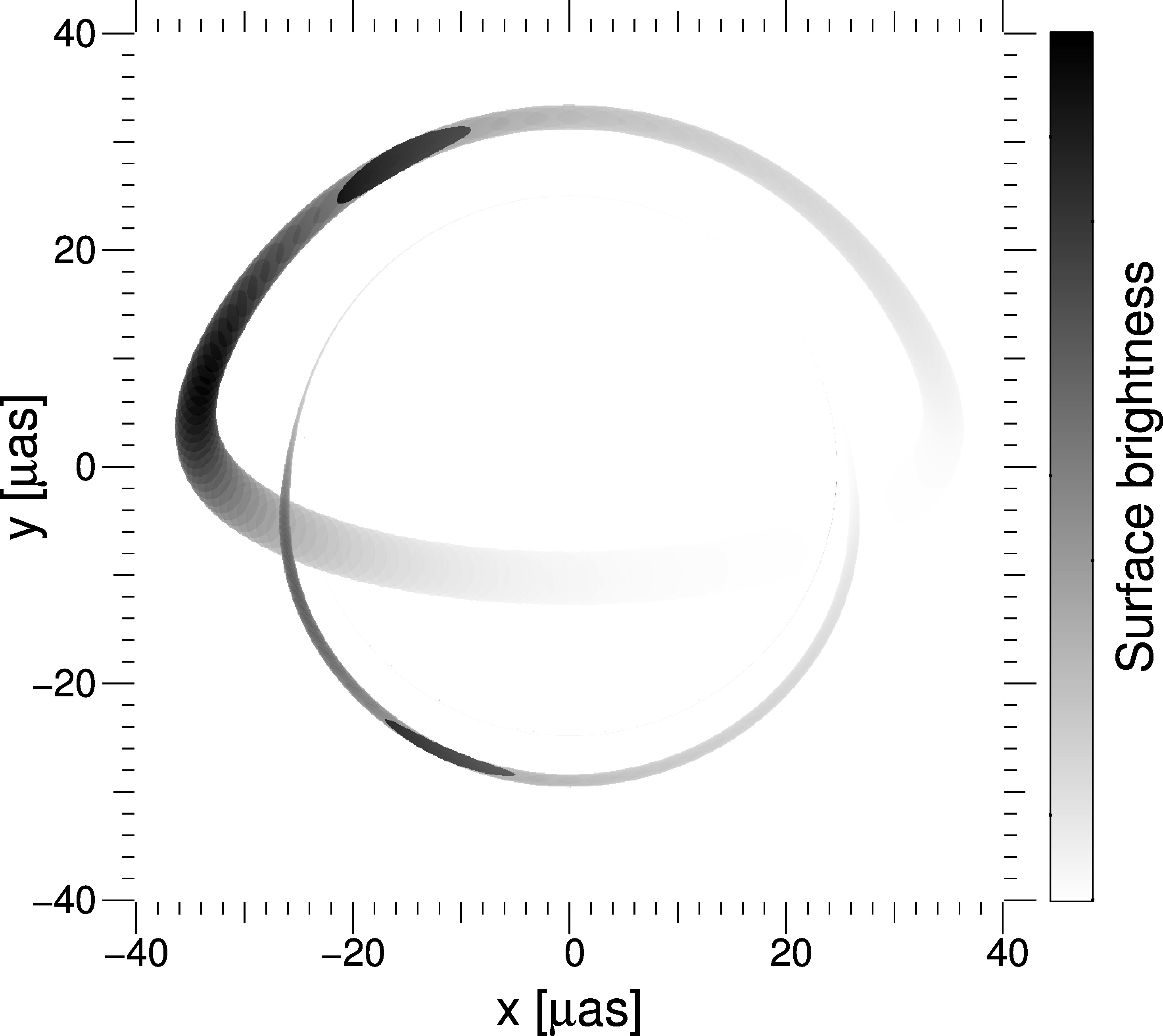
Fig. 1: LEFT: Travelled light paths of the primary (solid), secondary (long-dashed), tertiary (short-dashed) and quaternary (dotted) image of the source at a given arrival time (t = 0) at the observer's location. The higher the order n of an image I_n, the earlier its emission time t and the smaller the absolute value of its deflection angle ξ. RIGHT: A composition of ray traced images of a sphere on the ISCO about a Schwarzschild black hole in 70 degree inclination. The resulting hot spot is composed of a bright compact sphere in its center and an extended arc that follows a Gaussian brightness profile. Due to relativistic beaming, this profile appears modified [5].
We concluded that with an astrometric resolution of about 10 µas it should be possible to not only detect the orbital motion of a hot spot, but even higher-order general relativistic effects due to strong lensing and relativistic beaming (see Fig. 2). This all depends on a number of parameters, like the inclination and radius of the hot spot orbit, the size and spectrum of the spot itself. We also studied the influence of the black hole spin, finding only marginal impact on the observables. We argued that only an extension to polarimetric measurements would be able to probe the spin parameter of the black hole directly.
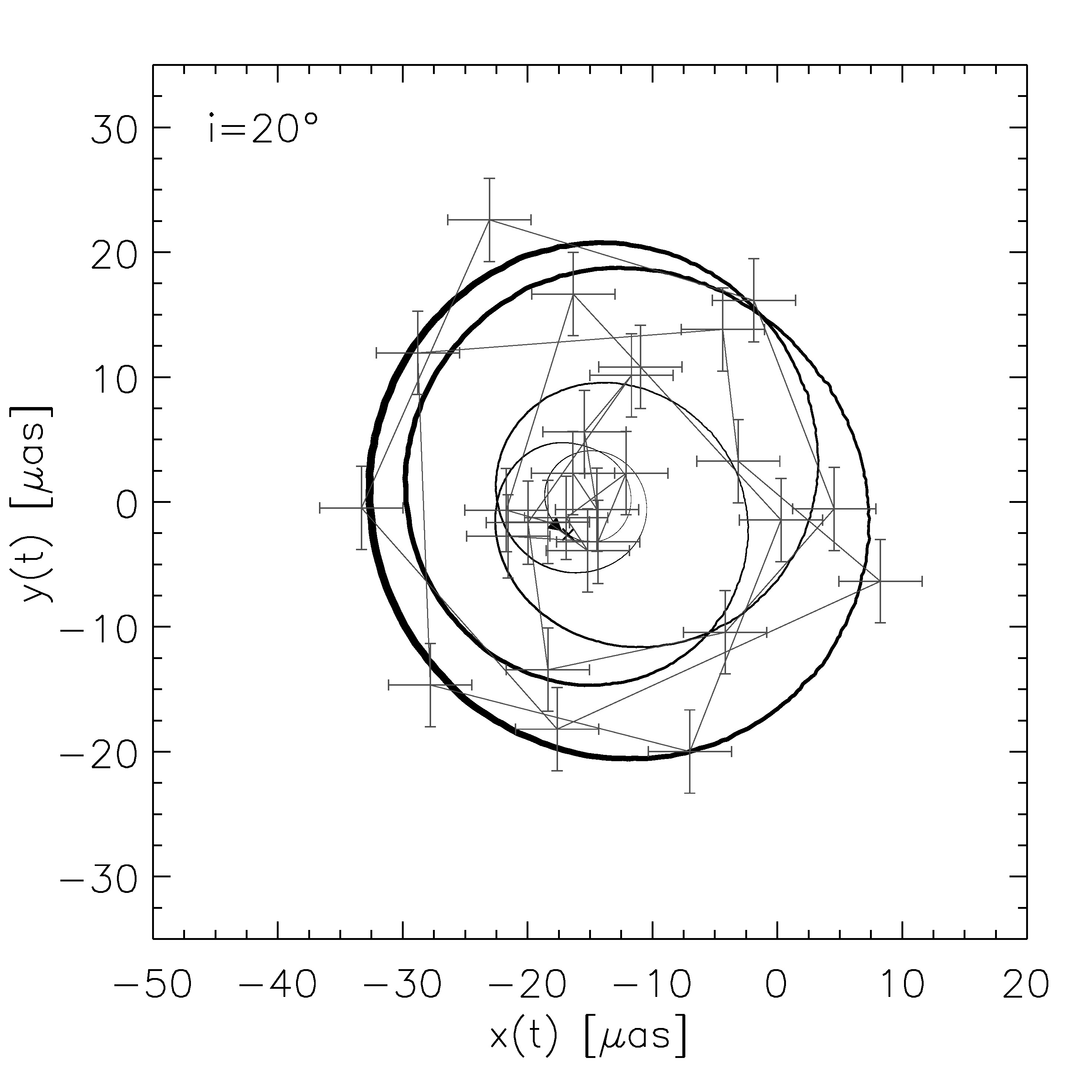
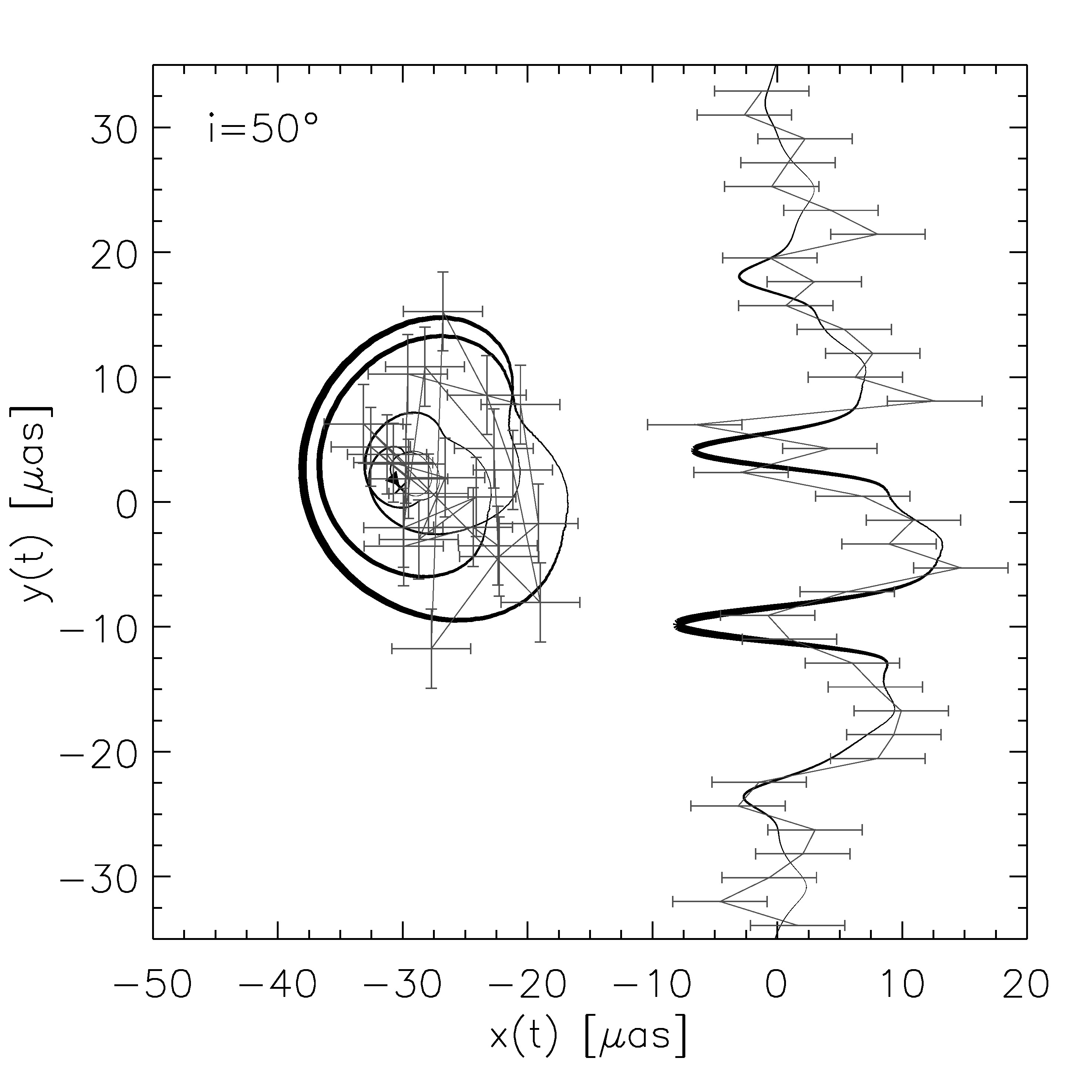
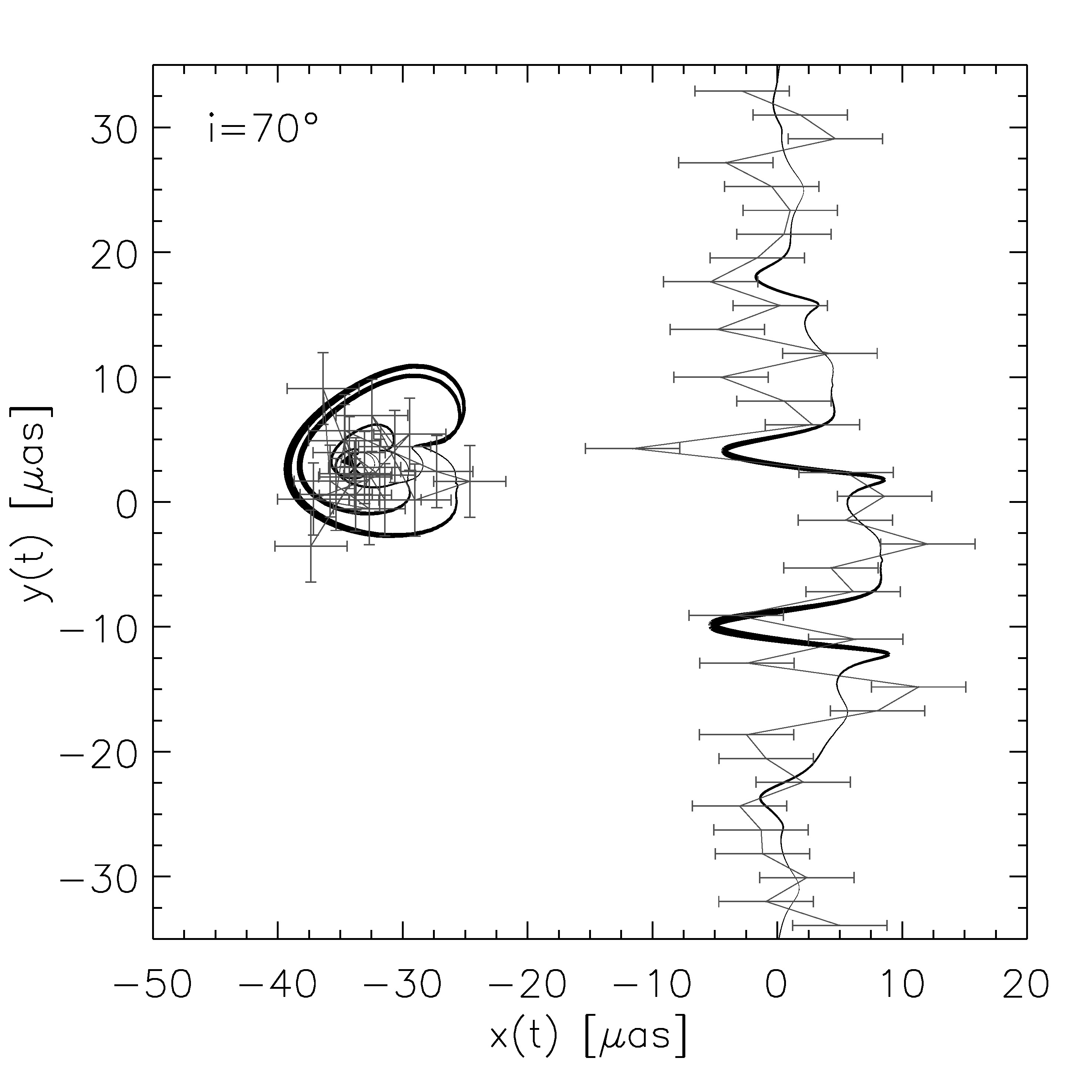
Fig. 2: Centroid tracks of the best fit model for an observed L-band flare in three possible inclinations. The brightness evolution of the flare is indicated by the line thickness. Superimposed are simulated data points as expected to be obtained with GRAVITY. The cases of 50 degrees and 70 degrees inclination additionally contain the spatial x(t) versus orbital phase φ(t) motion of the centroid [5].
References
[1] F. Baganoff et al. "Rapid X-ray flaring from the direction of the supermassive black hole at the Galactic Centre". Nature, 413:45–48, September 2001. [2] R. Genzel et al. "Near-infrared flares from accreting gas around the supermassive black hole at the Galactic Centre". Nature, 425:934–937, October 2003. [3] R. Schödel et al. "A star in a 15.2-year orbit around the supermassive black hole at the centre of the Milky Way". Nature, 419:694–696, October 2002. [4] F. Eisenhauer et al. "GRAVITY: getting to the event horizon of Sgr A*". In volume 7013 of Society of Photo-Optical Instrumentation Engineers (SPIE) Conference Series, July 2008. [5] N. Hamaus, T. Paumard, T. Müller, S. Gillessen, F. Eisenhauer, S. Trippe, and R. Genzel. "Prospects for Testing the Nature of Sgr A*’s Near-Infrared Flares on the Basis of Current Very Large Telescope — and Future Very Large Telescope Interferometer — Observations". Astrophys. J., 692:902–916, February 2009.